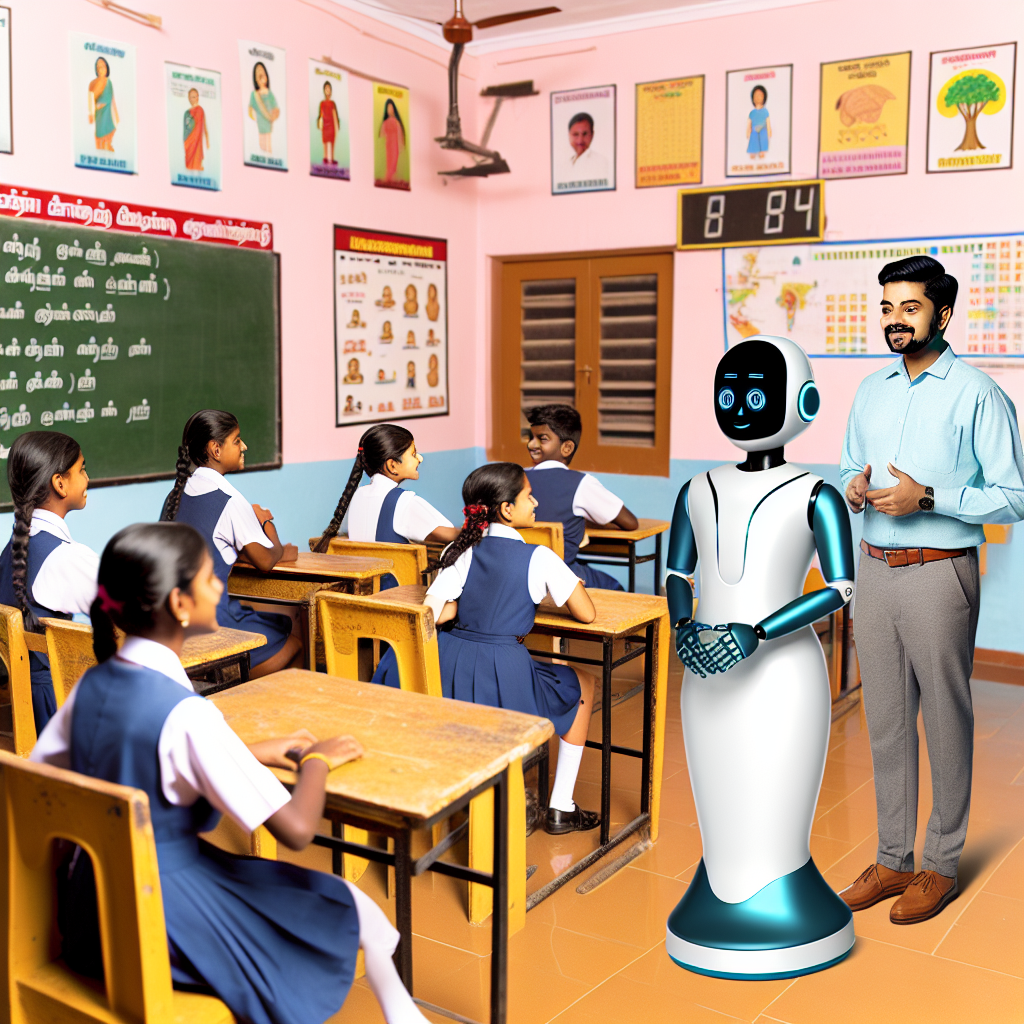AI Teaching Assistant ‘Vidya’ Transforms Education in Kumbakonam School
In a groundbreaking development, education in Kumbakonam is taking a significant leap forward with the introduction of an AI teaching assistant named ‘Vidya’. This innovative approach, described in a recent article by The Hindu, is setting a new precedent in the realm of education by integrating cutting-edge technology into the traditional classroom setting.
What is an AI Teaching Assistant?
An AI Teaching Assistant, like ‘Vidya’, is an artificial intelligence system designed to assist teachers and students in the learning process. It leverages AI technologies such as natural language processing, machine learning, and data analytics to provide personalized support to students. This includes answering questions, offering explanations, and even grading assignments.
In simple terms, imagine having a virtual helper in the classroom that can assist both the teacher and the students with their daily tasks and questions.
The Launch of ‘Vidya’
The introduction of Vidya at a Kumbakonam school marks a significant milestone. This AI teaching assistant is aimed at enhancing the educational experience by providing:
- Personalized Learning: Vidya tailors educational content to meet the individual needs of each student, ensuring that learning is paced appropriately for every learner.
- Instant Assistance: Students can ask Vidya questions at any time and receive instant, accurate answers, helping to reinforce learning material.
- Teacher Support: By automating routine tasks such as grading and attendance, Vidya allows teachers to focus more on interactive and creative teaching methods.
The Significance of AI in Education
The idea of incorporating technology into education is not new. Historical advancements such as the introduction of the blackboard, overhead projectors, and computers have all revolutionized teaching methods. However, the integration of AI represents a more profound shift.
AI can provide:
- Adaptive Learning: By analyzing student performance data, AI systems can adapt lessons to suit the learning pace and style of each student.
- Increased Engagement: Interactive AI systems can make learning more engaging, encouraging active participation from students.
- Efficient Administration: Automating administrative tasks reduces the burden on teachers, allowing them to devote more time to teaching.
Historical Context: From Blackboard to AI
Reflecting on the evolution of educational tools provides a clearer picture of how transformative AI can be.
*In the late 19th century*, the blackboard became a staple in classrooms, enabling teachers to present information visually to a group of students. This was revolutionary at the time as it fostered collective learning.
*Fast forward to the mid-20th century*, overhead projectors made their way into schools, allowing educators to display printed or written material to the class with ease, facilitating more dynamic and interactive lessons.
*In the late 20th century*, computers became integral to education, introducing students to digital literacy and enabling access to a wealth of information via the internet.
Today, with AI like Vidya, we are witnessing a new wave of transformation. By harnessing the power of AI, schools can provide a more personalized, efficient, and engaging learning experience for students.
The Challenges and Opportunities
While the introduction of AI teaching assistants offers numerous benefits, it also presents certain challenges.
Accessibility and Equity: Ensuring that all students have equal access to AI technology is crucial. There is a risk that the digital divide could widen if schools in rural or underfunded areas are unable to adopt such technologies.
Teacher Training: Teachers must be trained to use AI tools effectively. This involves understanding how the technology works and how to integrate it into their teaching practices.
Privacy and Security: With the use of AI comes the need to protect student data. Schools must implement robust measures to ensure that data privacy and security are maintained.
Despite these challenges, the potential benefits of AI in education are immense. By embracing this technology, schools can foster a more inclusive, efficient, and advanced learning environment.
Conclusion
The debut of AI teaching assistant ‘Vidya’ in a Kumbakonam school heralds a new era in education. By leveraging AI technology, schools can create a more personalized, engaging, and efficient learning experience for students. As with any technological advancement, there are challenges to be addressed, but the potential to revolutionize education is undeniable.
This development marks another step forward in the ever-evolving relationship between education and technology, hinting at an exciting future where AI plays a central role in shaping the minds of tomorrow.
Disclaimer: This is an AI-generated summary of the article. For more details, please refer to the original article on The Hindu.
